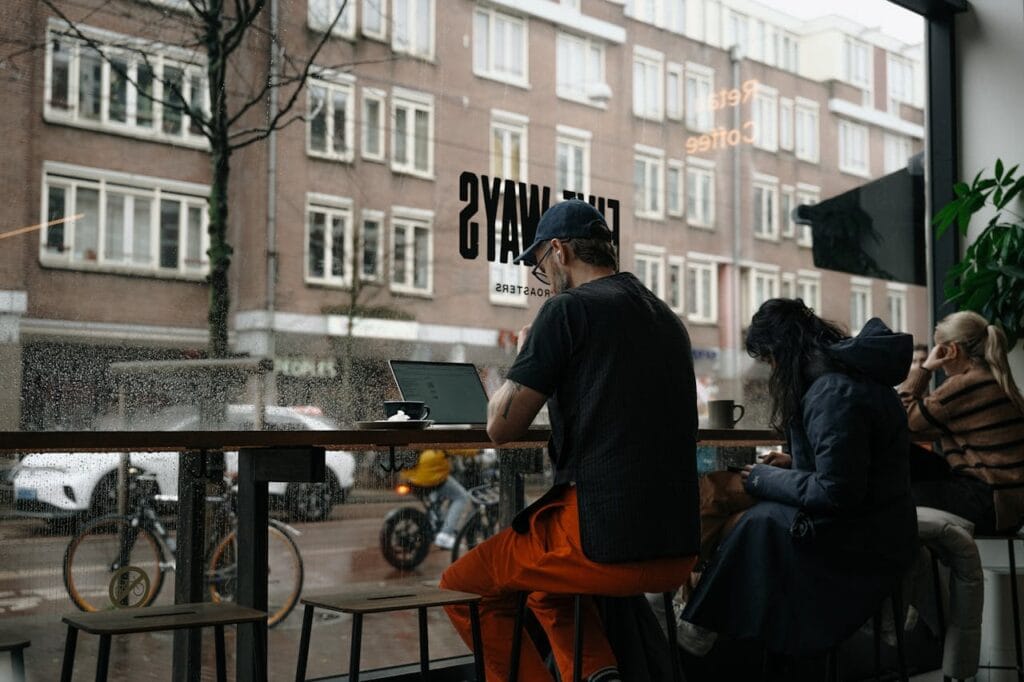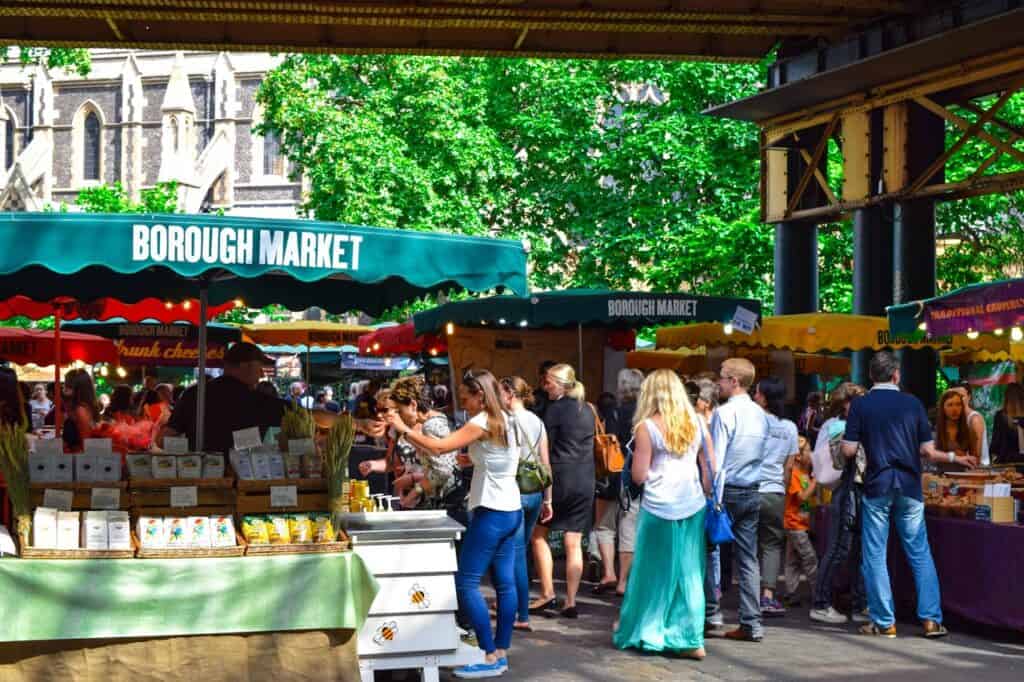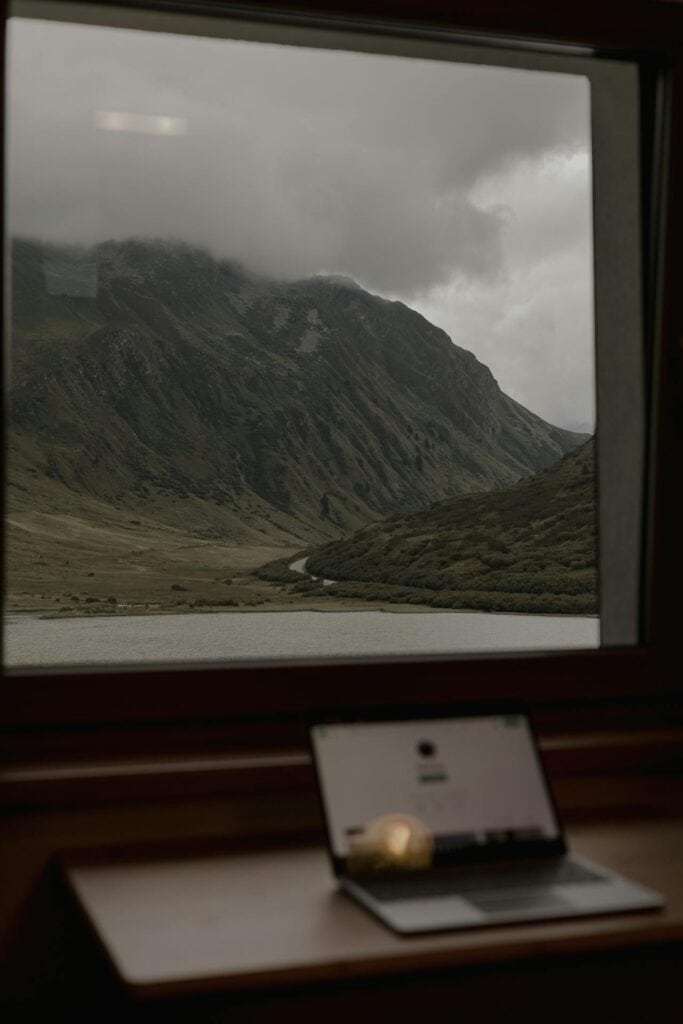We may earn money or products from the companies mentioned in this post. This means if you click on the link and purchase the item, I will receive a small commission at no extra cost to you ... you're just helping re-supply our family's travel fund.

The pandemic sped up something that was already happening: work became portable. No longer tied to skyscraper offices or urban commutes, millions began experimenting with life in smaller towns.
What started as temporary escapes has reshaped local economies. Cafés now double as offices, old inns fill with digital workers, and small-town main streets buzz in ways they haven’t in years.
This shift isn’t only about convenience. It’s also about lifestyle. People are rediscovering the appeal of slower mornings, walkable streets, and nearby wilderness while staying plugged into global work.
The result? A quiet tourism boom in unexpected corners of the map-powered less by sightseeing and more by laptops.
The Rise of Remote-Work Tourism

The concept of “work-from-anywhere” shifted from niche to mainstream in just a few years. Tiny towns, once thought of as sleepy, became destinations for longer stays.
These aren’t traditional tourists. They arrive with laptops, stay weeks or months, and spend like residents rather than visitors. That longer footprint has given towns both economic opportunities and cultural vibrancy.
For locals, the change can feel sudden. One year a café survives on regulars, the next it’s full of professionals on video calls. That mix is redefining what small-town tourism looks like today.
Digital Nomads Beyond the Big Cities
Digital nomads once gravitated toward global hubs like Bali or Lisbon. Now, the appeal has shifted to lesser-known U.S. or European towns. Reliable Wi-Fi and short-term rentals make it possible to trade tourist crowds for community life.
For many, the draw is authenticity chatting with locals at farmers markets or joining town festivals instead of lining up at urban landmarks. This new form of nomadism blends tourism with everyday living.
Small-Town Marketing Shifts
Communities are learning to pitch themselves differently. Instead of promoting weekend getaways, they highlight co-working spots, rental availability, and broadband access. Local governments are even creating relocation incentives, essentially turning tourism boards into lifestyle marketers.
This pivot suggests tiny-town tourism is more than a trend; it’s an economic strategy.
Economic and Social Ripples

An influx of remote workers doesn’t just fill Airbnbs. It reshapes how towns see themselves. New spending supports restaurants, gyms, and cultural spaces, breathing life into businesses that once struggled.
At the same time, housing and affordability become flashpoints. Rising demand for rentals and homes can squeeze locals, making balance critical for sustainable growth.
The mix of opportunity and tension reveals how deeply remote work touches community dynamics.
New Businesses, New Energy
Where remote workers go, new businesses follow. Coffee shops, co-working hubs, and wellness services often appear first, but the ripple spreads wider. From bakeries to bookstores, even small shifts in population can revive main streets.
That new energy isn’t just economic; it also attracts artists, freelancers, and families looking for creative, supportive environments.
The Housing Puzzle
The downside is clear: rising costs. Towns popular with remote workers often see sudden jumps in rental prices. Local governments face the challenge of balancing growth with affordability, ensuring tourism doesn’t turn into displacement.
Addressing housing supply, zoning, and community priorities becomes essential if these towns want the trend to last.
A Lifestyle People Don’t Want to Leave

Beyond economics, remote work tourism thrives on lifestyle appeal. People are drawn to slower rhythms, natural settings, and community connections absent in cities.
Some come for a season and never leave. This blending of visitor and resident blurs the line between tourism and migration, making tiny towns more diverse and dynamic.
Work-Life Redefined
Remote workers often talk about rediscovering balance. Instead of cramming leisure into weekends, they weave hikes, swims, or local markets into their weekdays. This shift makes tourism feel less rushed, more embedded in daily living.
For many, it’s not just travel; it’s a new definition of home.
Tiny Towns, Big Future
Remote work has rewritten the map of tourism. Instead of short getaways, small towns are hosting long-term stays that change both visitors and communities. The opportunities are big economic renewal, cultural exchange, and new residents.
But so are the challenges. Housing affordability, infrastructure, and cultural balance will determine whether this wave builds sustainably or breaks.
What’s clear is that remote work tourism isn’t fading. It’s shaping a new vision of how people experience place, work, and belonging in the 21st century.